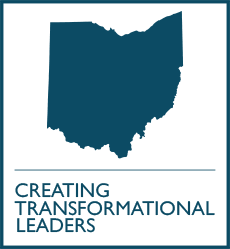For Medicine Students
Instructions
We suggest that you allow 20 minutes to show the film and a minimum of 30 minutes for discussion.
The following are options for use:
- Show film (20 minutes) in a large group and discuss in small break-out groups
- In addition to viewing the film, have a panel discussion of caregivers and/or experienced interdisciplinary providers who work with caregivers
- Learners view the film on their own time in preparation for small group and/or panel discussion
Learning Objectives
The learning objectives for the film and discussion are:
- Discuss the caregiving experience from a family perspective.
- Identify some of the challenges families face when caring for a loved one at home.
- Discuss how families find meaning in and navigate the challenges of their caregiving roles.
- Guide students toward recognizing how the caregiving role extends over the course of a patient’s entire illness, not just at the end of his or her life.
General Discussion Guide
- What caregiving experiences have you had or witnessed? How do your experiences compare to the situations depicted in the film?
- Which patient’s story touched you most? Why?
- What in the film surprised you?
- From the families’ stories, did you gain an appreciation for the essence of who the patient was as a person?
- What personal attributes of the patient transcended their illness? And what role did caregiving play in this process?
- How do you see the role of caregiving dovetailing with the practice of medicine?
- What biases or concerns do you have regarding caregivers?
- What worries you most about working with caregivers?
- When a patient is referred to hospice care, how does that further support the patient/family?
Additional Discussion
The following questions are based on specific scenes or dialogue in the film. It can be useful to point students to a particular scene or statement in order to draw the more reserved out of their shells.
- Barbara Haskins draws a distinction between the health care professional and the caregiver. For her, caregivers understand the particular needs of a patient better than the professional because the caregiver is closer to the patient. How do you respond to this statement? Is the distinction useful? What skills do you think physicians need to have to support patients and families at end of life?
- Shane Gippin states that all caregivers must recognize and accept when they need to stop providing care at home for their loved ones. What can the health professional take from this statement that will be useful for working with caregivers?
- Robert Lile declares that, “in the midst of very difficult times, there can still be laughter … there can still be joy.” How might the health care professional use this insight as a means of connecting with caregivers?
- Financial hardship meant that Mr. Haskins could not stay in a nursing facility. Money was a deciding factor for caring for him in the home. How does such a reality inform your understanding of the financial side of providing long-term care and how invaluable caregivers can be?
- Josh Gippin describes the unpredictability of caregiving when he says, “you get used to life being a certain way, then it changes.” How can the healthcare provider use this knowledge to prepare caregivers for what lies ahead?
- Barbara Haskins describes a visit with her husband to the Emergency Room, where the attending physician does not listen to her. Why do you think doctors and other health care professionals do not listen to caregivers?
Building Caregiver Partnerships
This site contains a free compendium of educational tools and resources on issues of family caregiving for health professions faculty, providers and students.
Co-sponsored with Summa Health and funded by the Arthur Vining Davis Foundations.


